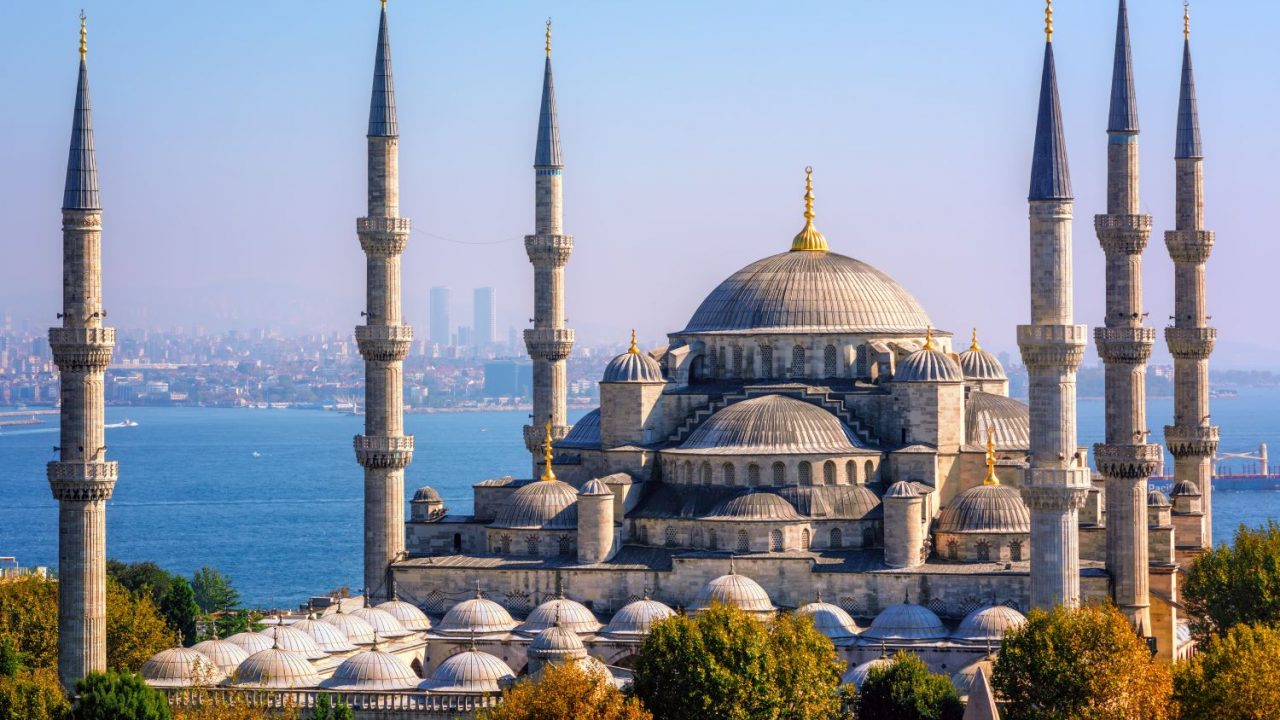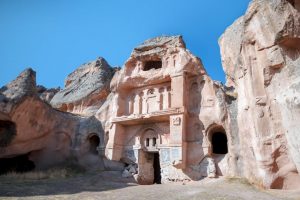
© Shutterstock
Location: Istanbul, Türkiye
Belief: Islam
Era: 1617 CE
The Sultan Ahmet Mosque of Istanbul, more commonly known as the Blue Mosque, was constructed at the start of the 17th century CE under the Ottoman Empire and took eight years to build. The architect, Mehmet Aga, was a student of the more famous Sinan who had built the Sulemaniye Mosque for Suleyman the Magnificent. It came at a time when the fortunes of the Ottoman Empire were in decline.
The mosque is in the centre of Istanbul, opposite the ancient Hagia Sofia across Sultanahmet Square. The architecture is typically Ottoman but on a grander scale. It has a large 43-metre high central dome, surrounded by four smaller domes, and six 64-metre high large minarets. It is decorated with 21,043 blue tiles from Iznik, which give it the name the ‘Blue Mosque’. There is a mezzanine floor for women including a gallery to see into the main mosque.
The six minarets were the most of any mosque in the world and were designed to mark the corners of the prayer hall and also the courtyard and ablution area [1]. However, this had the potential to cause concern in the Muslim world as it was more than the number of minarets in the main mosque in Makkah to which all Muslims pray and appeared to be the Ottomans trying to impose their dominance. To quell any discontent, the Ottomans added an additional minaret to the mosque in Makkah as well to maintain its superiority [2].
The mosque was part of a larger complex that included a madrassa religious school, hospital, kitchen and guest houses. For Turkish pilgrims, they would often start their Hajj pilgrimage journey at the mosque and then head towards Makkah [3].
This is a functioning mosque with a capacity for 10,000 worshippers. The carpets are donated, and replaced as they wear out. It is one of the main landmarks on the Istanbul skyline, and one of the most famous mosques worldwide.
ENDNOTES
[1] M. Frishman, & H. U. Khan, The Mosque: History, Architectural, Developmental and Regional Diversity (London, UK: Thames & Hudson, 1994), 60.
[2] M. Shales, Insight Guide: Turkey, (Discovery Channel, 1999), 126.
[3] T. Can, Turkey: Cradle of Civilization, 4th Edition (Istanbul, Turkiye: Orient Publishing House, 2001), 22-23.
Additional Reference:
D. Whiting, Footprint Turkey Handbook (Bath, UK: Footprint Handbooks, 2001).



Add Comment